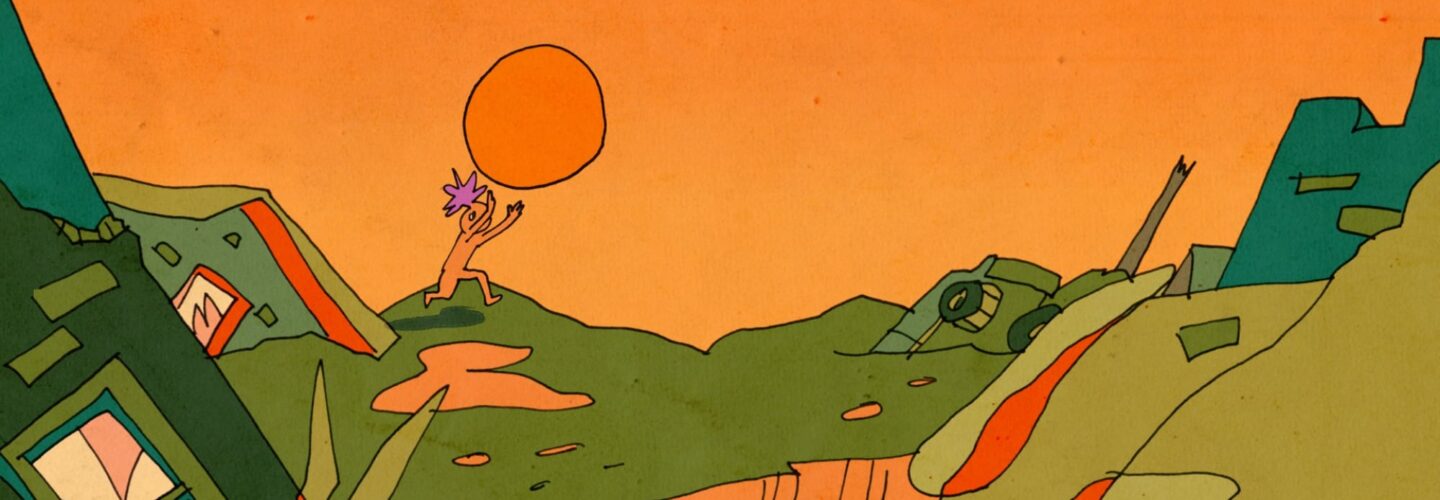
Amidst the persistent challenges posed by climate issues, it remains crucial for us to continually educate ourselves and others about ways to coexist harmoniously with our planet. In the world of filmmaking, while documentaries often serve as a primary source of environmental inspiration, fiction also holds significant potential to motivate action. Emily Halaka’s striking animated short film, Organic Matter, works as a compelling example of this approach, as through a dream-like fantasy world she prompts viewers to reflect upon the condition of our own planet. Delving into the intentions behind her film and the creative process that gave rise to its distinctive universe, Halaka joins us today for Organic Matter’s online premiere to discuss her approach to filmmaking.
You describe your film as being about “a group of scavengers” who “navigate a surreal, acid-coloured planet in the aftermath of an ecological reckoning”, where did this storyline originate from?
Early on I was describing the film as a sort of climate apocalypse in reverse. It’s this bittersweet fantasy of the natural world having agency, of the Earth being able to physically resist our efforts to subjugate and devastate it.
Dialogue felt too straightforward and I knew pretty quickly that I wasn’t going to use it.
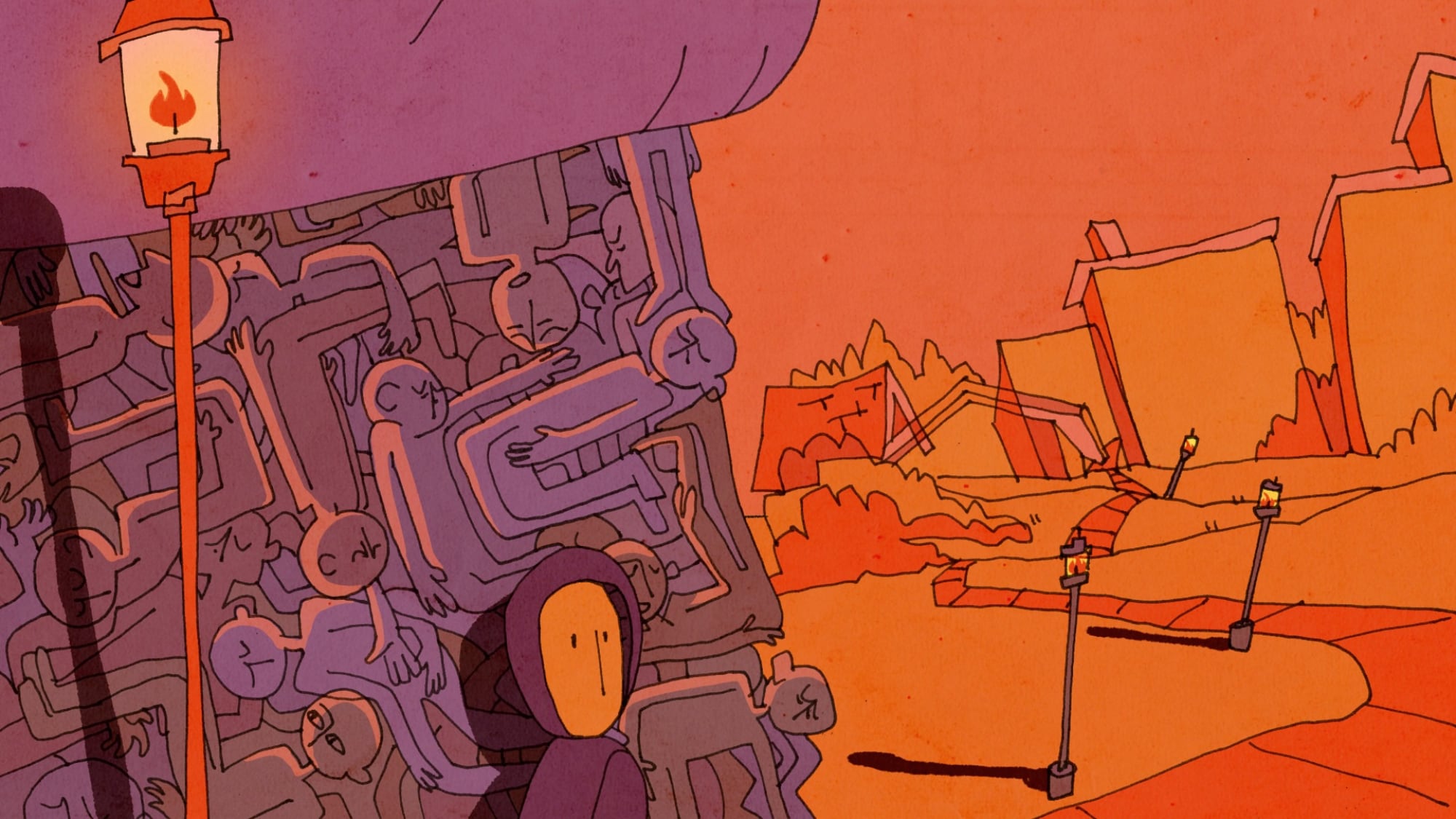
The narrative unfolds through a series of dialogue-free vignettes where we get to witness this world and its inhabitants in their everyday routines. Why did you choose to adopt this more observational approach to storytelling over one with more of a straightforward narrative arc?
I wanted the film to have a dreamlike, abstracted quality. Dialogue felt too straightforward and I knew pretty quickly that I wasn’t going to use it. Instead, I just started animating these vignettes, one by one, knowing that I would get a sense of the world along the way as I built it out. The sequence early on where these three characters sprout like plants out of a pool was the first thing I completed that felt like, oh, this is what it’s going to look like. This is who lives here and this is how they behave, and this is how their environment moves in tandem with them.
Although Organic Matter is quite a surreal piece, it’s hard not to watch it and think of the delicate state we find our own environment in. I know the messages we take from films often come down to individual reactions, but was there a particular message you were hoping to get across in your film?
There’s this idea that humanity and human interests are at odds with the planet – that we’re two separate, discrete entities. But actually, we’re just creatures made of the same organic material that the Earth is. The film is about the collapsing of this boundary.
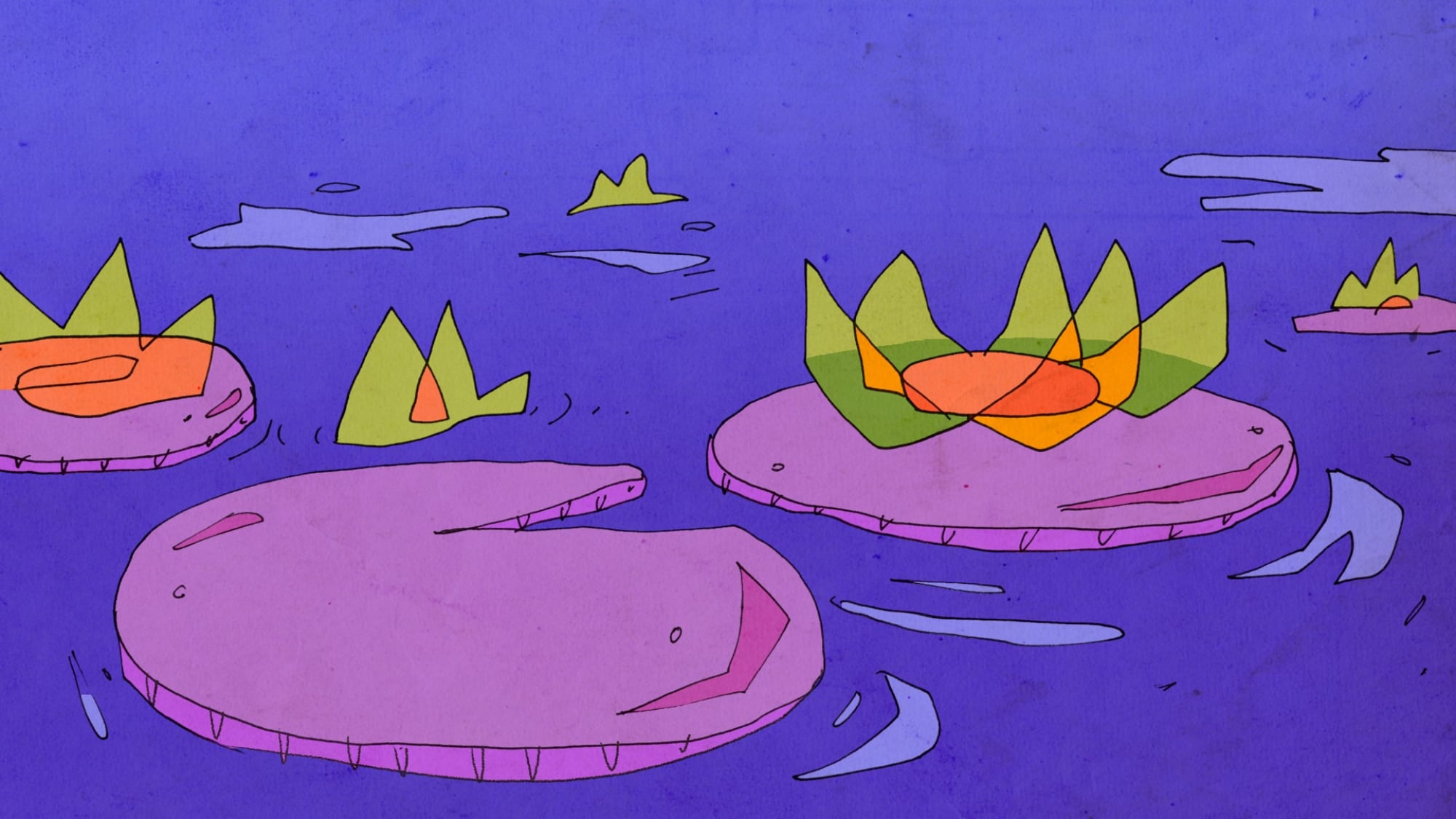

Organic Matter feels like a film that could have been told in a number of different animation styles, what made you adopt this more traditional hand-drawn 2D approach?
Honestly, I just got sick of looking at the computer a couple of years ago and switched most of my workflow to analog. I love drawing with ink on paper and moving as fast as I can, not caring about tidiness or imperfection but instead trying to capture a specific energy with each frame.
Removing the ability to immediately hit ‘undo’ on those choices makes the act of drawing more enjoyable.
A former professor once told me that a drawing is fundamentally a series of choices you make when putting lines in relation to one another. I think that, at least in the way I work, removing the ability to immediately hit ‘undo’ on those choices makes the act of drawing more enjoyable and more impactful. I still totally color in TVPaint with the bucket fill, though.
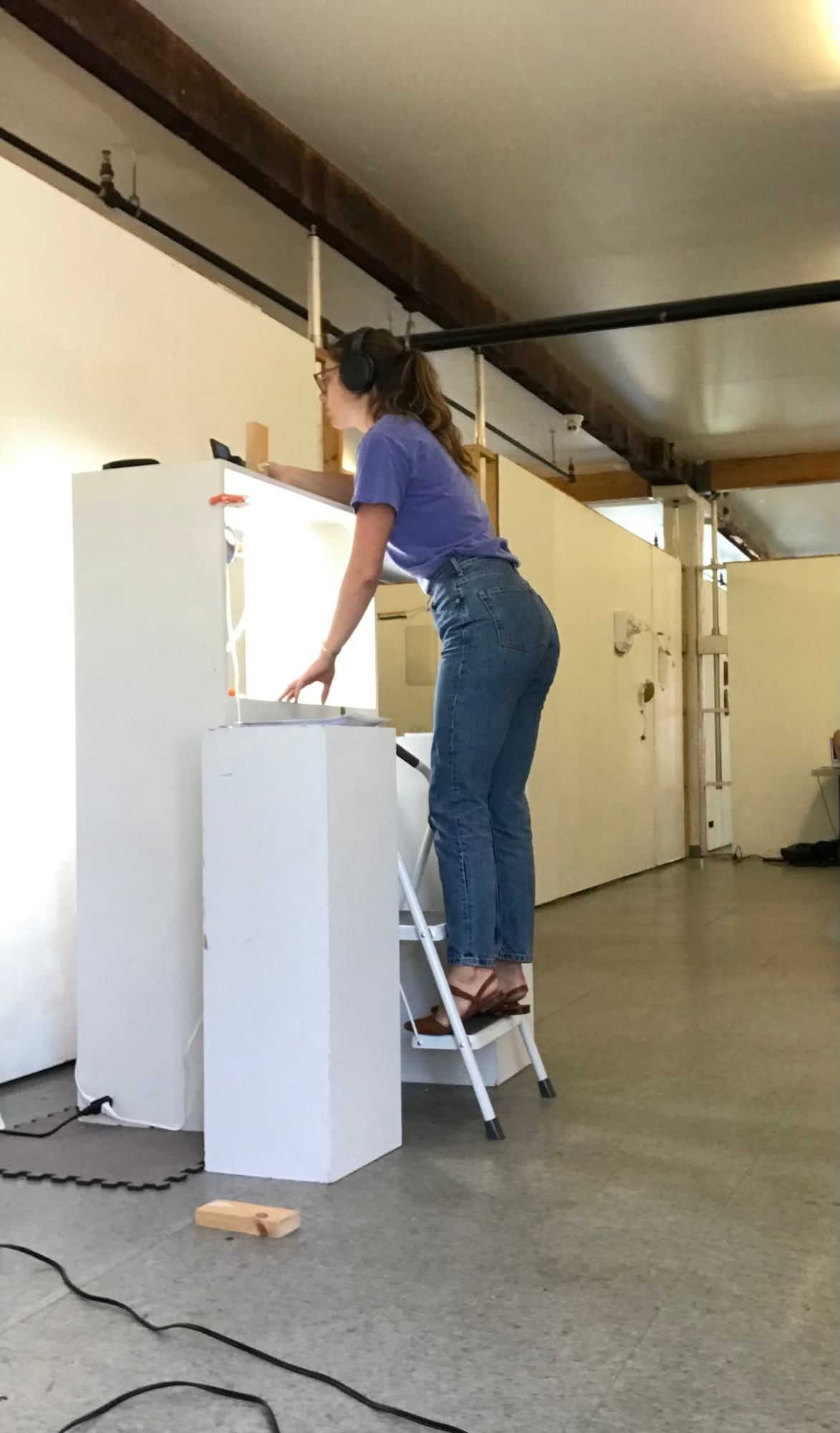

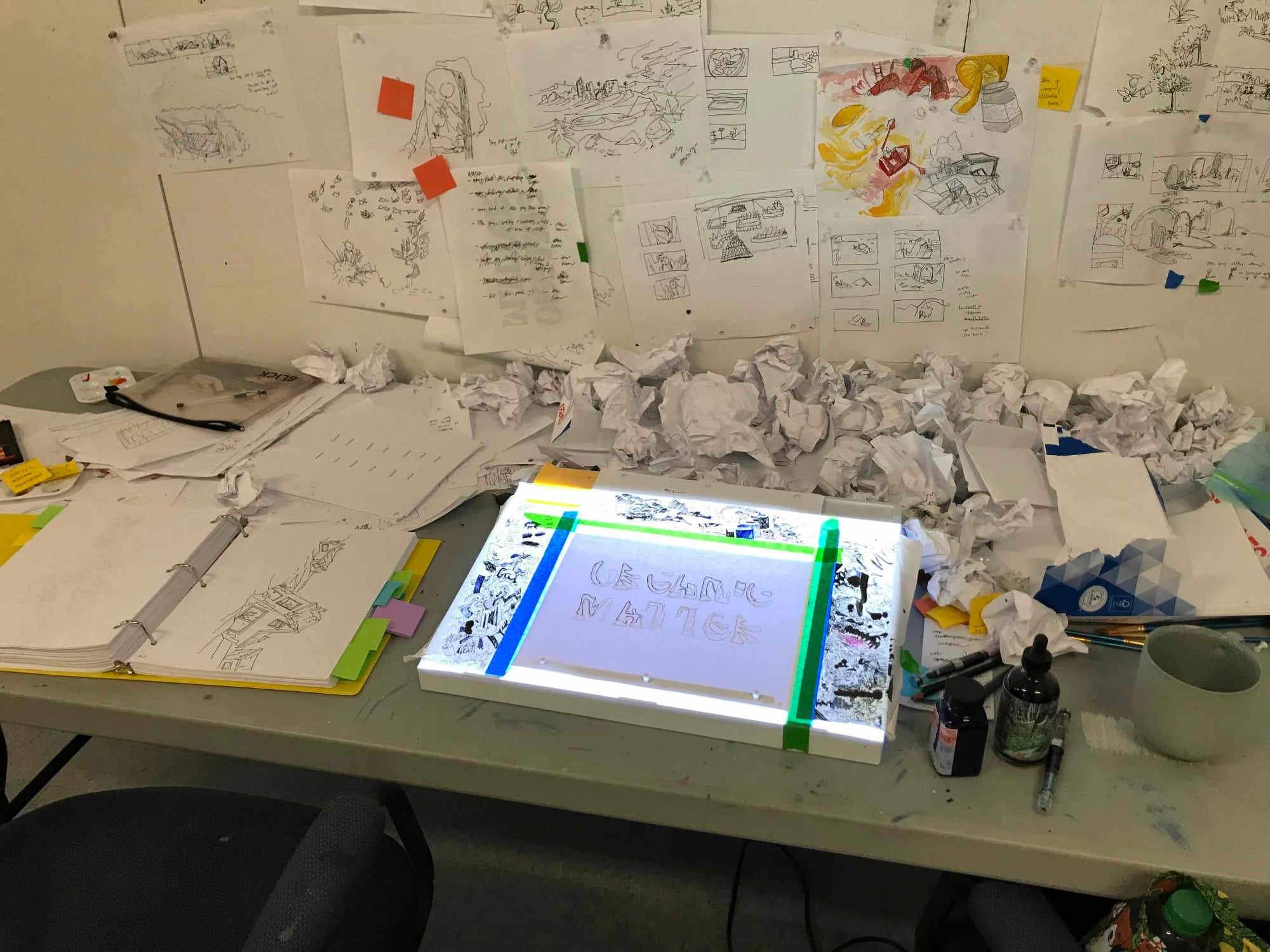
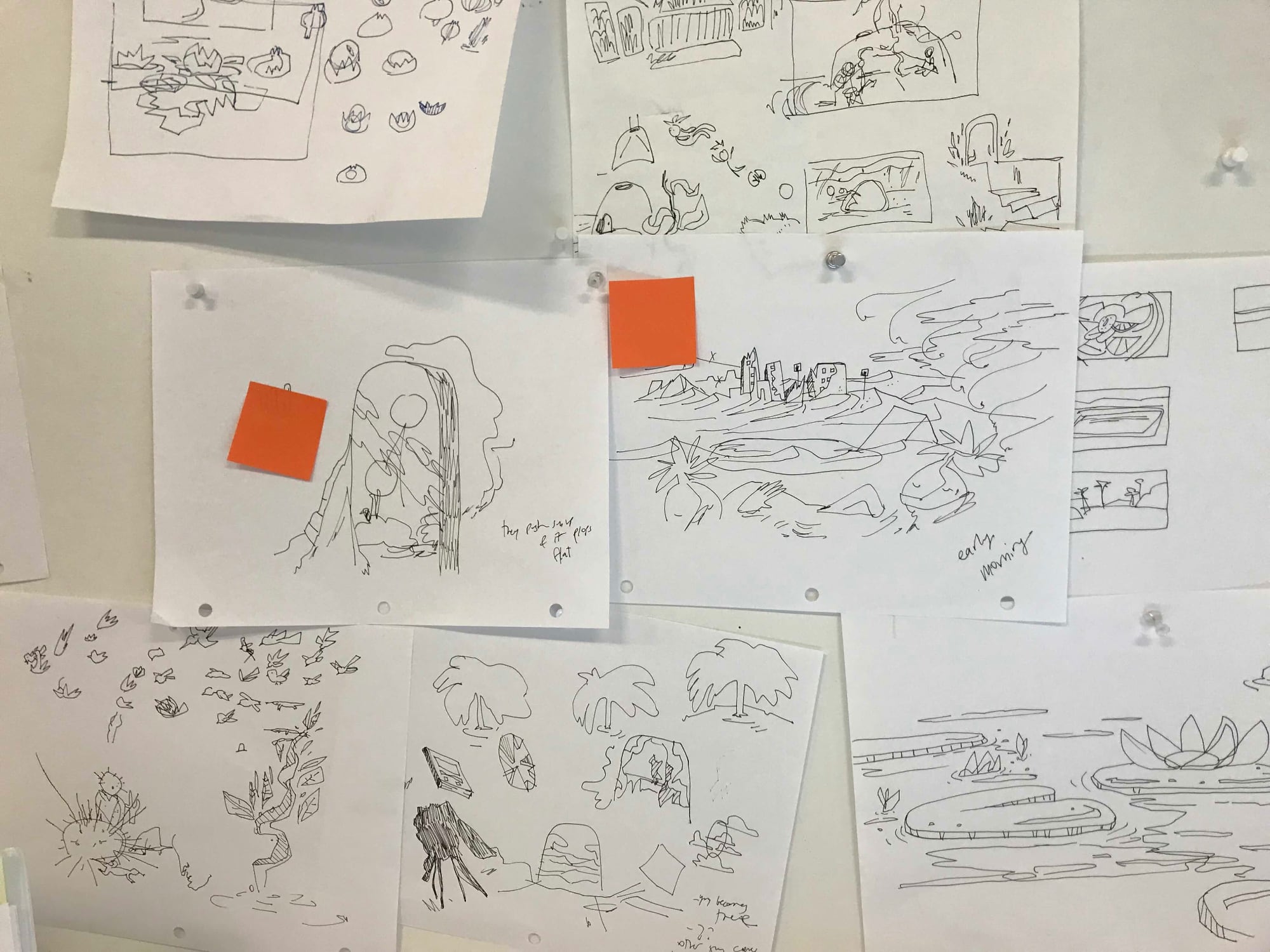
Can you provide us with some insight into your production? I know from your credits that you pretty much did everything apart from the music, but can you tell us a little about the tools you used and the time it took?
I drew everything with fountain pen on paper. I like Noodler’s Ink and regular copy paper, and I have a lightbox that I got from Lightfoot in Temecula – they’re one of the only companies still doing old-school animation equipment. In the summer of 2022, I was an artist-in-residence at the Lower Manhattan Cultural Council and I had this really nice studio space on Governors Island – I did most of the animation there. I was able to construct a downshooter in their space so that I could photograph my drawn frames one by one to digitize them. The whole thing took about a year, start to finish.
I set a very limited palette early on and had a rule not to deviate from it – I wanted to clearly define this environment as a different space from our own.
What was the most challenging part of the production?
Tying up loose ends is always hard – fixing the sloppy stuff you did where you said “I’ll deal with this later!”. I always forget that later will eventually arrive.
My favourite part of the film has to be the colour palette, which manages to feel both organic and otherworldly in equal parts. It plays such a big role in the world-building, can you explain your decision-making in choosing the colours?
It was important to me that the world of the film felt warm and inviting, even as these strange events are taking place. I set a very limited palette early on and had a rule not to deviate from it – I wanted to clearly define this environment as a different space from our own. I focused a lot on orange, purple, and green – fire colors, toxic chemical colors, fever-dream colors. I liked this idea of using colors that are not often found in nature to populate this alternative version of a natural environment.
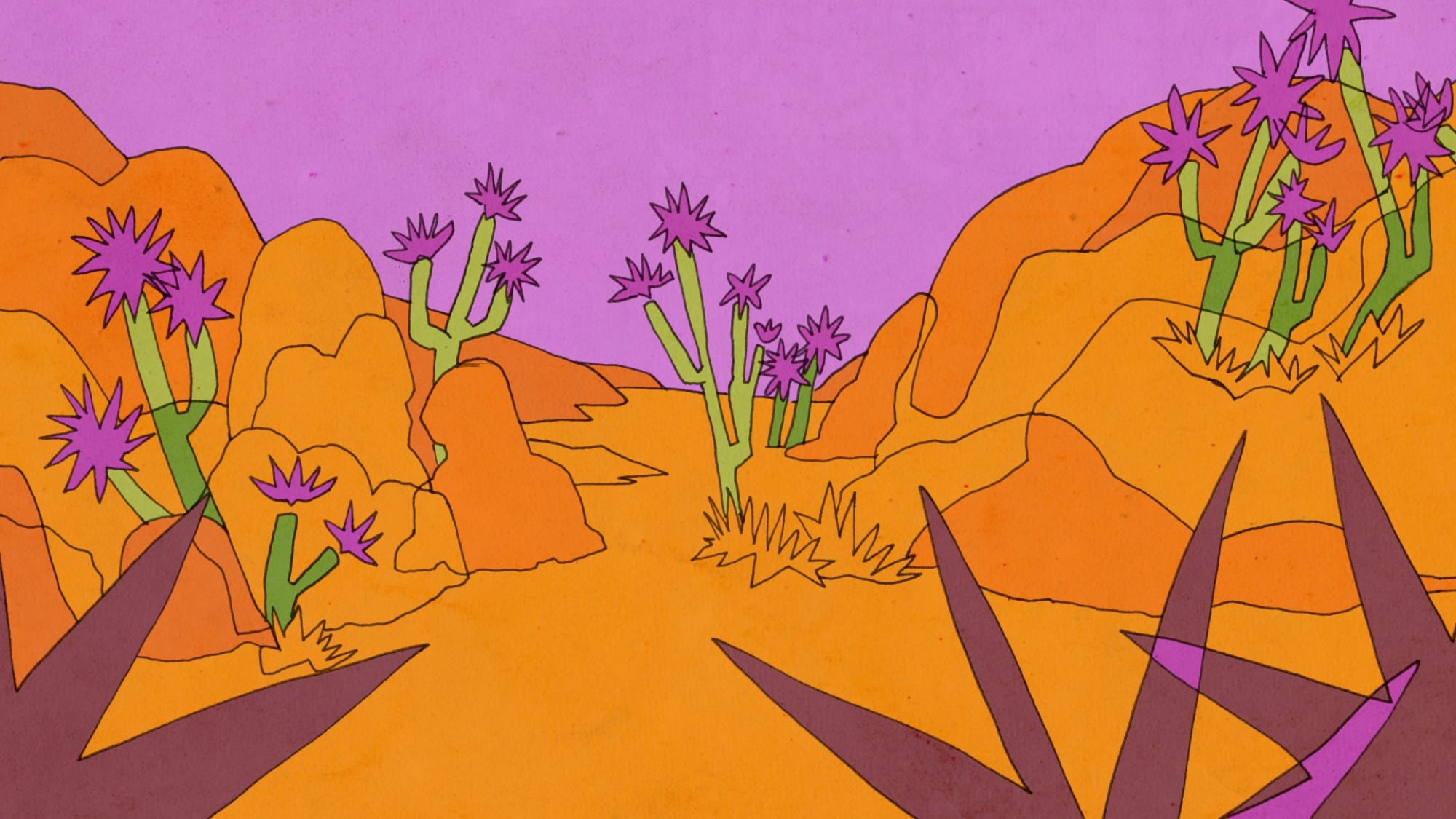

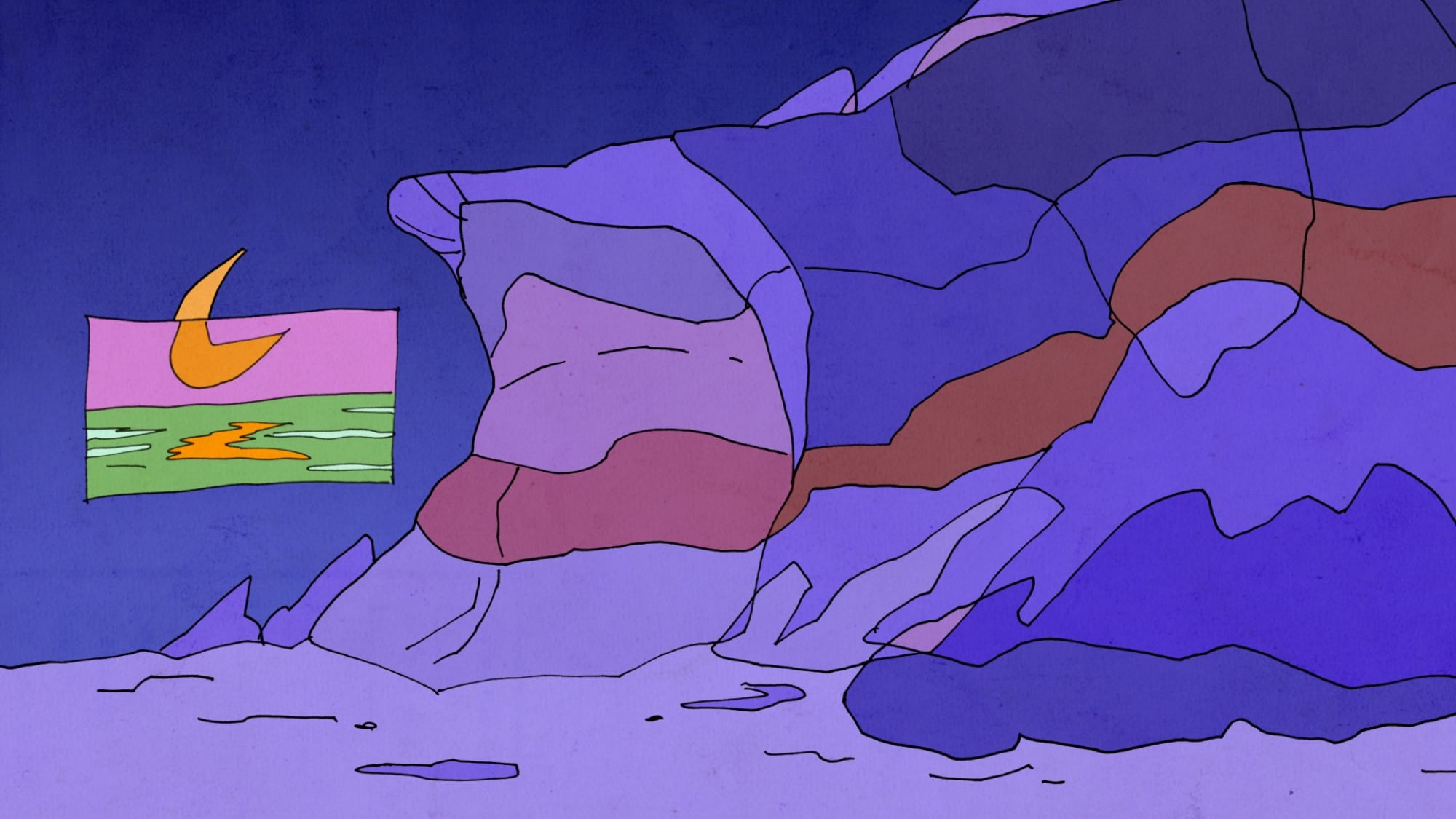

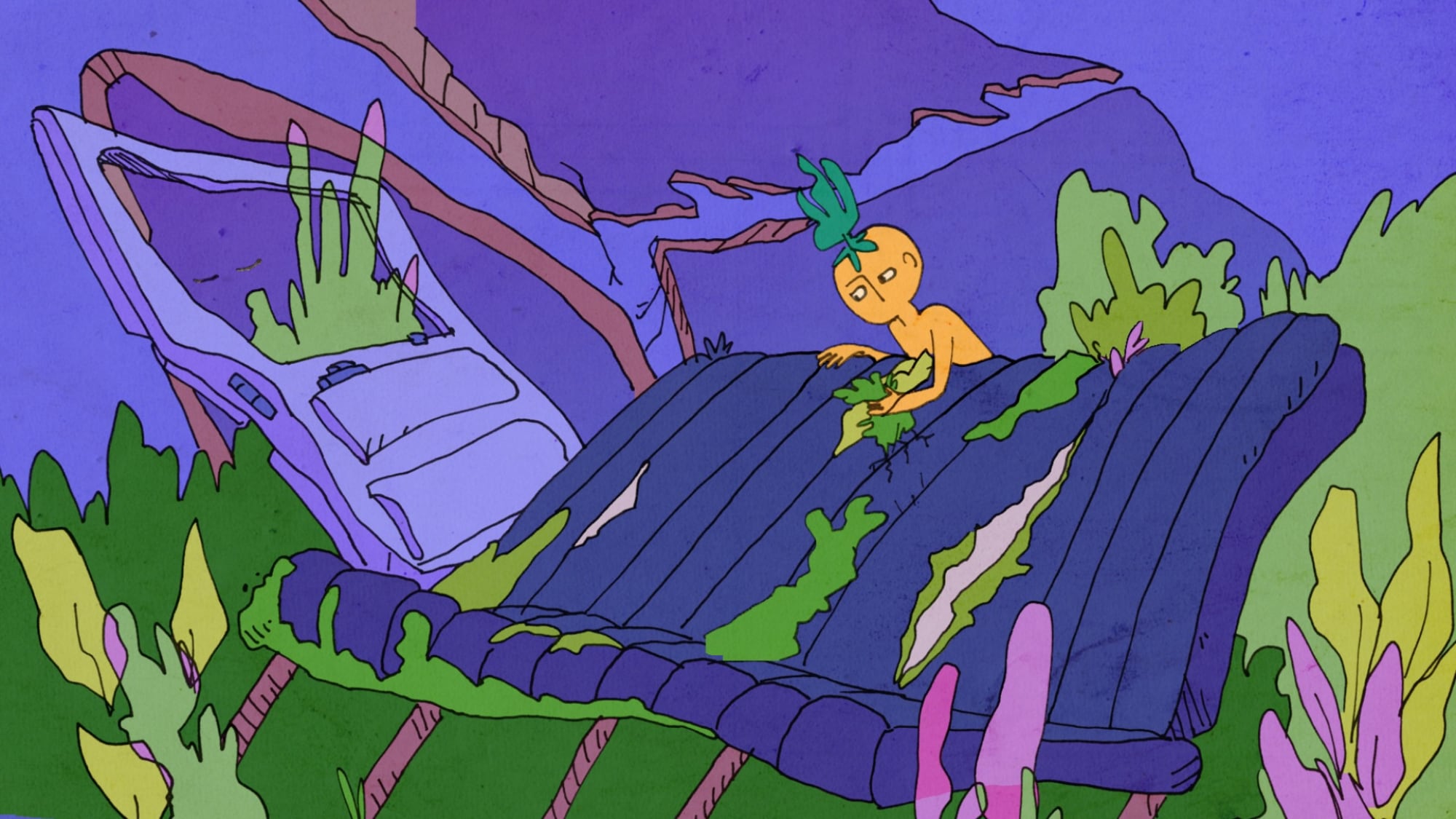
The score and sound design also play an important role in this otherworldly feel, how did you work with Carter Watson to get this just right?
The film straddles these contradictions – primeval and futuristic; apocalyptic and harmonious – and we wanted to emphasize that with the score. Carter created two main themes that play throughout the film, and both of them float beautifully between those contrasting feelings. Both of the songs have this awesome tuba-like sound at the bottom as the rhythm section part – like a squelching. When I heard that I knew it was perfect. We put a little bit of buzzing and friction throughout the whole thing to keep anything from sounding too clean or polished – I wanted it to feel lived-in.
With Organic Matter now released online, what can you expect from you in the future? Do you have any exciting new projects on the horizon and where can our readers go to follow your work?
I have a clip in the new season of Adult Swim’s Off the Air, which was a teenage dream come true – Carter also did the music for that one. Other than that, just drawing more, cooking up new animation. You can find me online at emilyhalaka.com.

